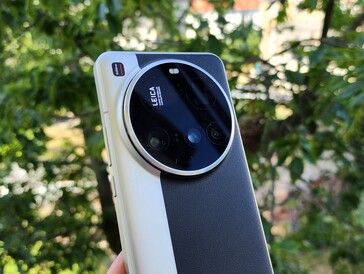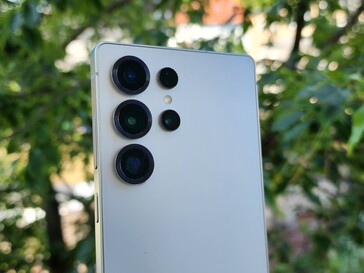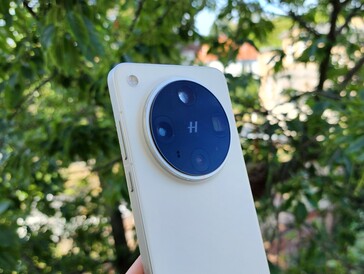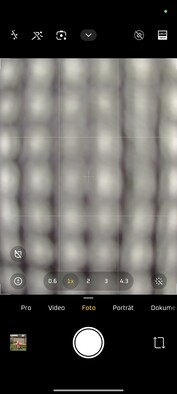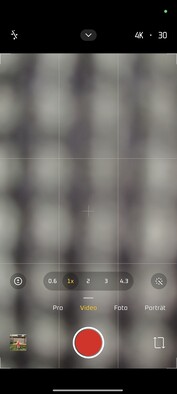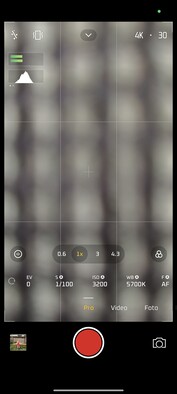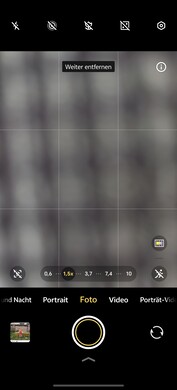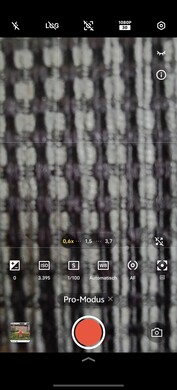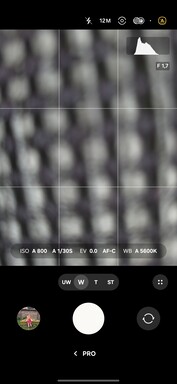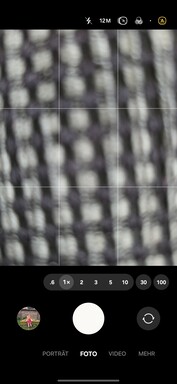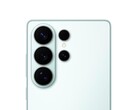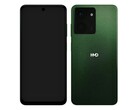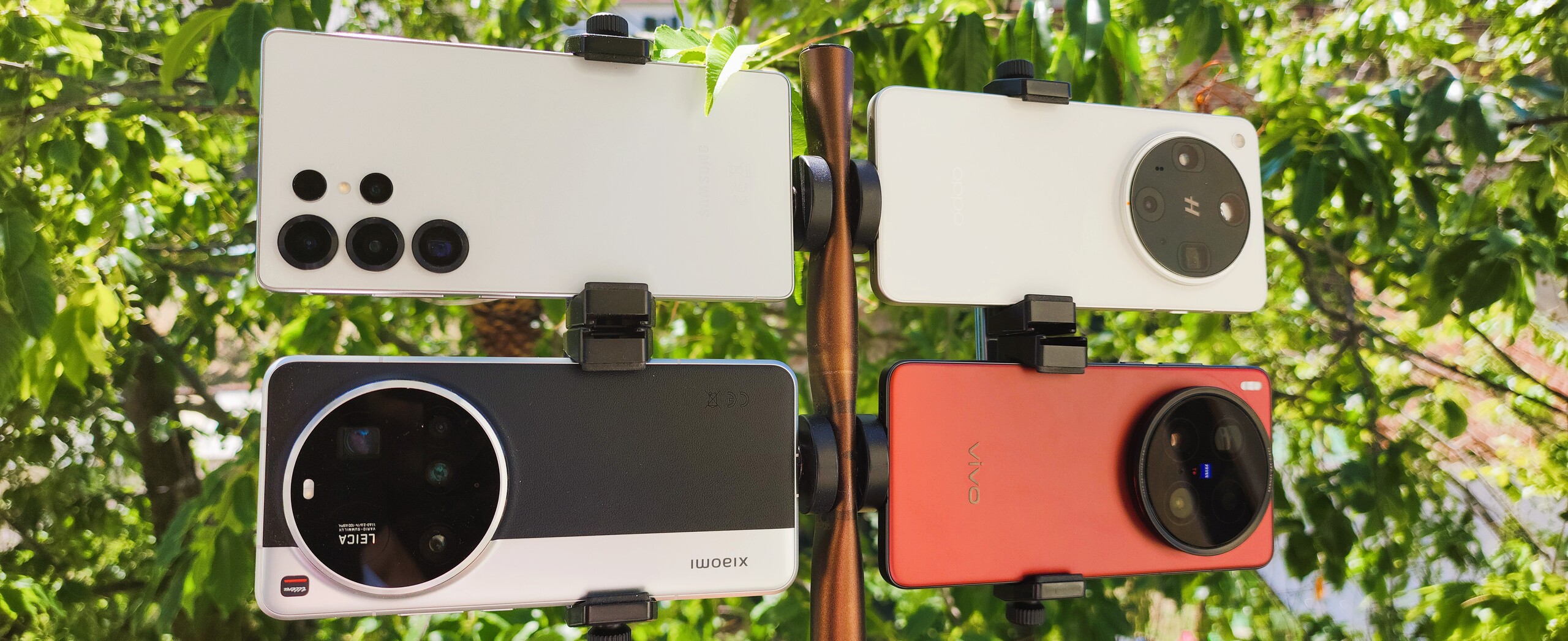
Video and photo test with the best smartphones of 2025: Samsung and portraits are not a good match
The best smartphone cameras of 2025 | Part 2
The battle for the best smartphone camera goes into the next round. The Samsung Galaxy S25 Ultra, Oppo Find X8 Ultra, Xiaomi 15 Ultra and Vivo X200 Ultra compete against each other with their video and photo capabilities. Read our review to find out which flagship phone comes out on top.Marcus Herbrich, 👁 Marcus Herbrich (translated by Enrico Frahn) Published 🇩🇪 🇫🇷 ...
Verdict on our camera test with the best smartphones of 2025
Thanks to a high level of detail, all four flagship smartphones impressed us with their main cameras. The Vivo X200 Ultra stands out with excellent sharpness and high dynamic range, but its colors sometimes appear a bit too vibrant. Oppo’s Find X8 Ultra and the Xiaomi 15 Ultra also deliver strong results. The Samsung Galaxy S25 Ultra appears a bit softer overall and shows minor weaknesses. In demanding portrait scenes with fine textures, the Samsung phone performs surprisingly poorly.
For users who prioritize maximum detail in photos and videos under less-than-optimal lighting conditions, the Oppo Find X8 Ultra is likely the best choice.
Low-light photography remains the ultimate challenge. The large 1-inch sensor in the Oppo Find X8 Ultra performs well in these situations and captures many details even in very low light without long exposure times. The Xiaomi 15 Ultra also delivers good results in low-light shots but falls slightly short compared to the Oppo phone due to a minor blurring. While the Vivo X200 Ultra takes quite appealing night photos despite its smaller sensor, the Samsung Galaxy S25 Ultra lags somewhat behind.
In terms of video recording, all smartphones perform well in daylight. Xiaomi and Oppo offer the best image stabilization in our test footage. When there’s less light, the two Ultra smartphones also dominate with their 1-inch sensors, while Samsung and Vivo fall behind in quality.
Price and availability
Oppo Find X8 Ultra & Vivo X200 Ultra
These four "Ultra" smartphones are expensive. In Europe, the Oppo Find X8 Ultra and Vivo X200 Ultra are currently only available via import from China. The Oppo flagship starts at €800 for the base model, while the Vivo phone costs at least €870 at Trading Shenzhen.
Samsung Galaxy S25 Ultra
US prices for the unlocked Samsung Galaxy S25 Ultra with 256GB of storage currently start at roughly $1,100 on Amazon.
Xiaomi 15 Ultra
The Xiaomi 15 Ultra is also available significantly below its MSRP of €1,500, currently starting at roughly €1,060. Via import, the Xiaomi flagship can even be found for as low as €750.
Comparing photos and videos taken with the best Android phones
We already put the Galaxy S25 Ultra, Oppo Find X8 Ultra, Xiaomi 15 Ultra and Vivo X200 Ultra through their paces in the first part of our camera review. We now move on to the ultimate challenge, namely the main camera. Therefore, we compare photos and videos taken with the regular wide-angle lens. Strictly speaking, the Vivo flagship has neither a classic main camera nor a true wide-angle lens, as its main shooter has a 35mm focal length.
However, there are more differences than just the focal length, as these manufacturers also opted for different camera sensor sizes. Samsung's Galaxy S25 Ultra has a 200-megapixel ISOCELL HP2 sensor (1/1.3-inch), while Oppo's and Xiaomi’s flagships rely on a large 1-inch sensor with 50 megapixels. Vivo strikes a middle ground with its 1/1.28-inch stacked sensor. The technical specifications of the these camera modules can be found in our comprehensive reviews.
Photos from the best smartphone cameras of 2025 in daylight
In daylight, the flagship smartphones only show some differences in fine details. Additionally, it’s immediately apparent that the 35mm camera of the Vivo X200 Ultra has a significantly narrower field of view compared to the classic wide-angle lenses of its competitors. The extreme artificial sharpening, which was quite common not too long ago, is barely visible anymore.
In our camera test, Vivo’s flagship scored with excellent sharpness and very good dynamic range. However, the colors sometimes appear a bit too vibrant. We also liked the daylight photos from the Oppo Find X8 Ultra and Xiaomi 15 Ultra, although the Xiaomi flagship tends to overexpose in our view.
The level of detail is high across the board, although the Samsung Galaxy S25 Ultra renders subjects a bit softer overall. In terms of sharpness, the flagship smartphones from Oppo and Vivo perform the best. Furthermore, our house photos show that Samsung's HDR processing doesn't work as well as Vivo’s, for instance.
For portraits, the differences are more pronounced than in photo mode. The fine hair structures of the kitten are very well isolated and create a nice separation between the subject and the background. However, this only applies to the Chinese phones, as the Samsung Galaxy S25 Ultra appears very unnatural here. Since we always take multiple shots, this isn't an anomaly for the Galaxy phone.
The best smartphone camera at night
Nighttime photography remains the ultimate challenge for smartphone cameras. In this discipline, Oppo takes advantage of the large 1-inch image sensor.
However, let’s start with the Galaxy S25 Ultra. Its 200-megapixel sensor takes pretty good pictures at night. However, the Samsung phone takes comparatively grainy and noisy images. Furthermore, there's a slight deficit in terms of details, which means that fine textures like on the facade of the building are not captured well. The long exposure of the Galaxy S25 Ultra is also noticeable. While this allows more light onto the sensor, it also increases the risk of blur.
Night shots from the Vivo X200 Ultra are also very appealing. Although the Sony sensor is smaller than the one found in the Oppo or Xiaomi devices, it still manages to produce impressive low-light photos. This illustrates that even smaller sensors, with the right image processing, can deliver excellent results at night.
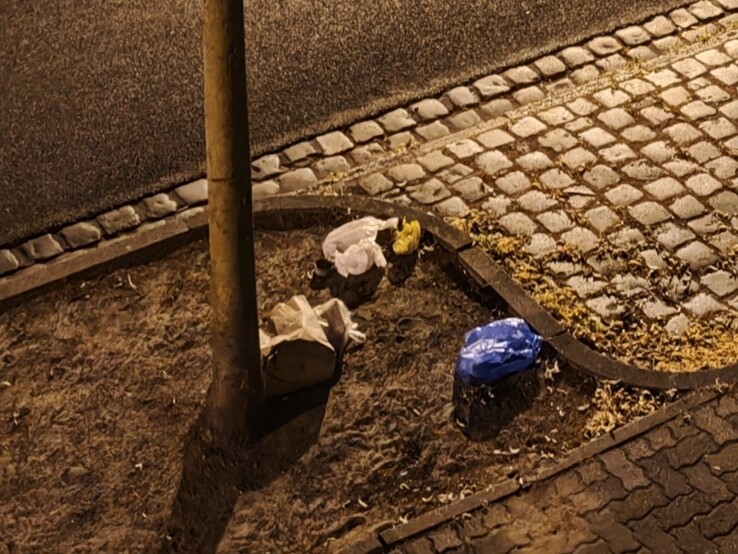

left: Xiaomi 15 Ultra - right: Oppo Find X8 Ultra
That being said, the Oppo Find X8 Ultra truly excels in low-light conditions. With its 1-inch sensor, it shows appealing sharpness and retains many details in very dark scenes, like the test photo of the house. It doesn’t require long exposure times either. In comparison, the Xiaomi 15 Ultra lacks a bit of sharpness in poor lighting conditions, even though it also utilizes the same Sony LYT900 sensor.
Both the Xiaomi 15 Ultra and Oppo Find X8 Ultra offer excellent sharpness in darkness and also process bright image areas quite well. Their HDR algorithms perform exceptionally well here. On the other hand, the Samsung Galaxy S25 Ultra isn't quite as impressive in this regard, as light sources sometimes appear significantly overexposed.
Video quality of high-end smartphone cameras compared
One of the most crucial criteria for video recordings is the 4K image quality. That’s why we'll take a closer look at clips shot in 4K30. First, we compare the rear main cameras of the four flagship smartphones in good lighting conditions in order to achieve the best possible results.
Focusing is very reliable and fast, which results in sharp videos. All devices perform well here, significant blurring is nowhere to be found with sufficient light.
While the Samsung Galaxy S25 Ultra and Vivo X200 Ultra show slight weaknesses in terms of stabilization, the Xiaomi 15 Ultra and Oppo Find X8 Ultra remain very steady even during brisk walking, thanks to their OIS+EIS system. The Galaxy phone struggles with the latter.
In scenes with direct sunlight, Oppo and Xiaomi perform very well. The X200 Ultra reacts to sunlight with slight overexposure, leading to washed-out colors. Samsung also occasionally reveals some image artifacts in direct sunlight. But in daylight, the sharpness and detail across all four smartphones are generally at a high level.
In low light, there are obvious differences. While the two contenders with 1-inch image sensors have advantages in darkness, the Galaxy S25 Ultra and Vivo X200 Ultra experience a drop in video quality. Compared to the Xiaomi 15 Ultra, the Oppo Find X8 Ultra offers even higher dynamic range and slightly more realistic colors.
Smartphone camera apps for photos and videos in comparison
When it comes to adjusting settings inside the camera app, all interfaces offer a great deal of flexibility. In this regard, there are barely any significant differences or true advantages for any manufacturer. For users who like color filters, Vivo provides the most extensive selection. Every high-end phone can take RAW photos, but the Galaxy S25 Ultra additionally features a special Pro mode for RAW photos with even more options.
If you want to utilize the native resolution of these image sensors, all flagship phones in this comparison serve you very well. Still, we see the Samsung phone slightly ahead of its Chinese competitors, as One UI’s camera software offers this setting even outside the aforementioned Pro mode. Moreover, the Galaxy S25 Ultra supports an additional 50-megapixel binning mode, in addition to standard 12.5-megapixel shots.






